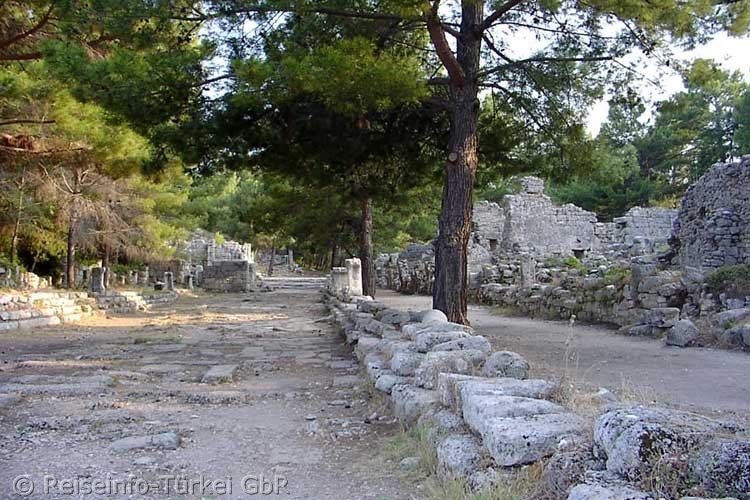|
Holidays on the Turquoise Coast |
|||
| Where once Alexander the Great hibernated |
|
||
| Phaselis | |||
| Ancient city with an eventful history | |||
|
|
|||
|
The ancient city of Phaselis is a popular destination for local excursion agencies in nearby Kemer, but also along the entire coastal strip between Antalya and Alanya. It is also an interesting stopover on the Blue Journeys from Antalya to Kekova and back. Although the ruins of Phaselis are worth seeing at any time of the day, it is best in Phaselis in the afternoons when most buses have left and the city belongs to locals and individual tourists. Then it is possible to take in the remnants of this city's eventful past. |
|||
|
According to tradition, the Greek hero Lakios of Rhodes landed on the peninsula with his entourage in 690 BC to found a new settlement. There he met the owner of the peninsula, a shepherd, and offered him grain or dried fish as the purchase price. He chose the dried fish. Even after the city was founded, it was customary to sacrifice dried fish for centuries. |
|||
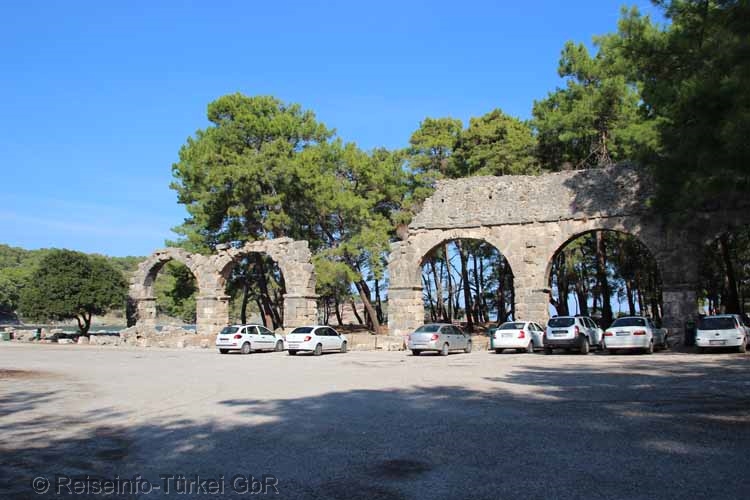 |
|||
|
After leaving the box office and the small museum behind, one passes some inconspicuous ruins, among other things the foundation of a temple. At the driveway to the large parking lot the remains of the aqueduct fascinate the interested visitor. |
|||
|
The aqueduct brought drinking water into the city from Mount Olympos, today Tahtalı Dağı, 25 km away. It was extended under the Roman emperors Domitian and Trajan in the 1st century AD and partly renewed during the visit of Emperor Hadrian in 129 AD. |
|||
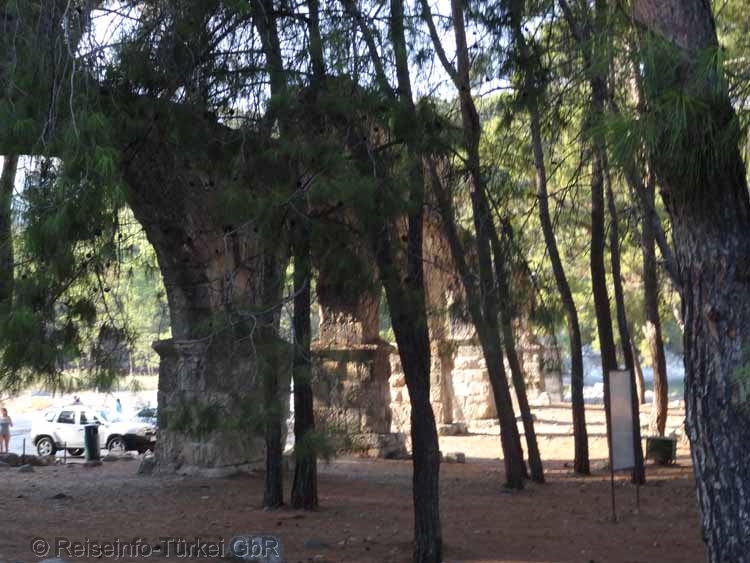 |
|||
| Phaselis, like many cities along the Turkish Mediterranean coast, has an eventful history. Here is a short summary: | |||
|
Founded around 690 B.C. as a Rhodian colony, Phaselis belonged to the Persian Empire from around 550 B.C. for a long time. In 334 B.C. Phaselis surrendered to Alexander the Great, who hibernated there in winter 334/333 before the Battle of Issos. |
|||
|
|
|||
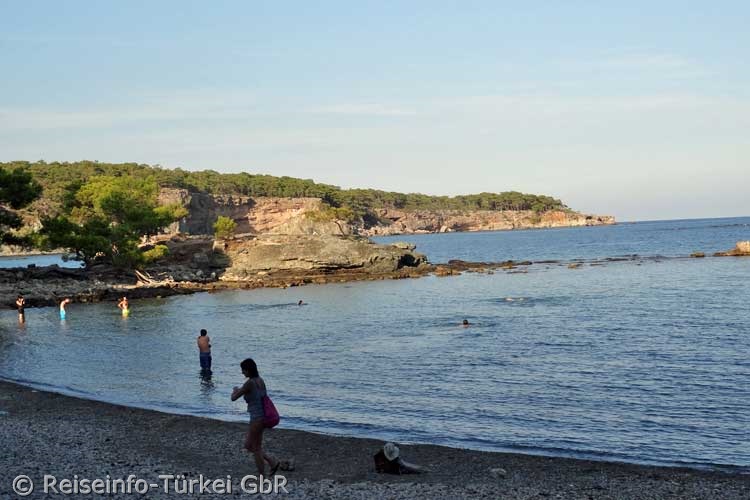 |
|||
|
The so-called city harbour with its once mighty quay walls is now a popular bathing bay. On Sundays and holidays, several local families from the area camp here. |
|||
|
The city harbour was a transshipment point for all kinds of commercial goods. In Roman times, Phaselis was a port city known throughout the ancient world. The rose oil and perfume produced in the area was exported to Rome and almost all Roman provinces. This gave the city enormous wealth and prestige. However, the inhabitants of Phaselis were crying out for their advantage, outrageous people who did not think of paying back borrowed money. |
|||
|
|
|||
|
From the city harbour, a 10 meter wide and almost 300 meter long cobbled boulevard leads across the peninsula. The road was lined with columns on both sides. It was the busiest street in the city where the most important public buildings were located. |
|||
|
At the northern end of the boulevard was the large bath, an elongated spa complex with adjoining gymnasium. The hypocaustum, the underfloor heating of the caldarium, is still visible today. The aqueduct reaches this far today. |
|||
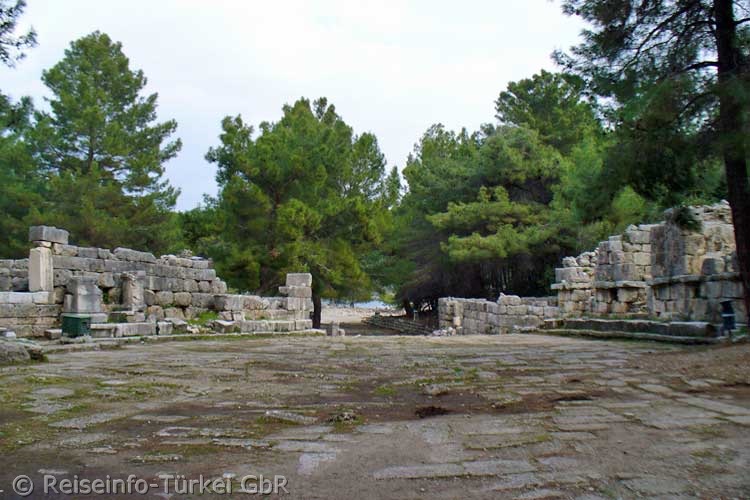 |
|||
|
In late antiquity, a central square, the first agora, was already built about in the middle of the boulevard. On the west side is the Bouleuterion. It is assumed that this building was originally two-storeyed, as both stairs and window openings can be seen. |
|||
|
On the eastern side, below the Acropolis, is the smaller Roman bath. Here, too, the Roman underfloor heating, the hypocaust, is still clearly visible. |
|||
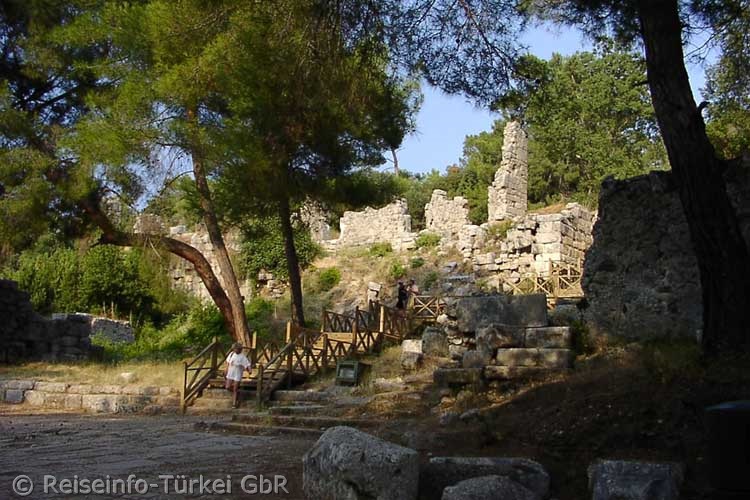 |
|||
| On the eastern side of the Agora, a wooden staircase leads to the theatre, which is set into the slope of the Acropolis. The original Hellenistic theatre was extended in Roman times by a two-storey stage house. | |||
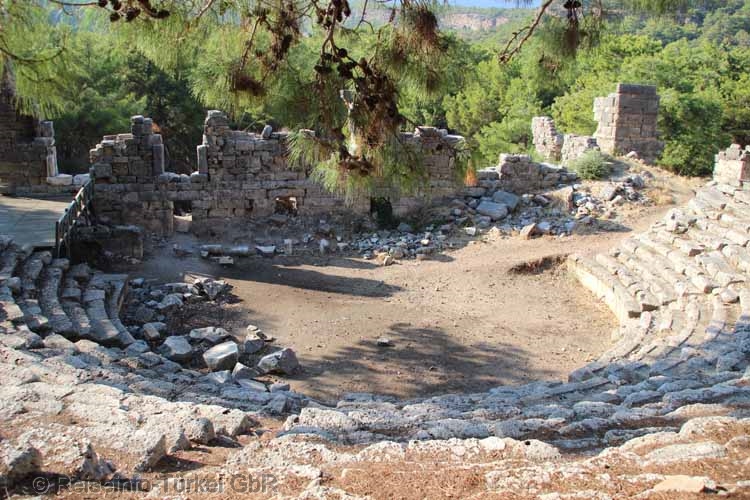 |
|||
| The theatre had a capacity of approx. 1700 spectators, which found place on 20 rows of seats. There are some indications that in the later Roman period the theatre was converted into an arena and grids were installed between cavea and orchestra to protect the audience from predators. Under the stage house were at this time the predator cages. | |||
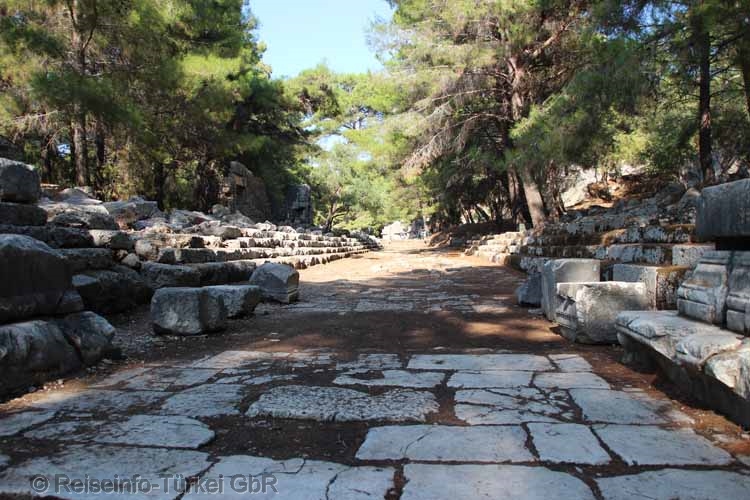 |
|||
|
From the central market place, the boulevard continued to the southern harbour. This section of the road was flanked on both sides by four rows of stone steps. It is assumed that processions or similar were held on this part of the boulevard. |
|||
|
In honour of the emperors Domitian and Trajan a new agora were built on the west side of the boulevard. This testifies to the high volume of trade at that time. Of the buildings surrounding the Agoren, only a few remains remain. |
|||
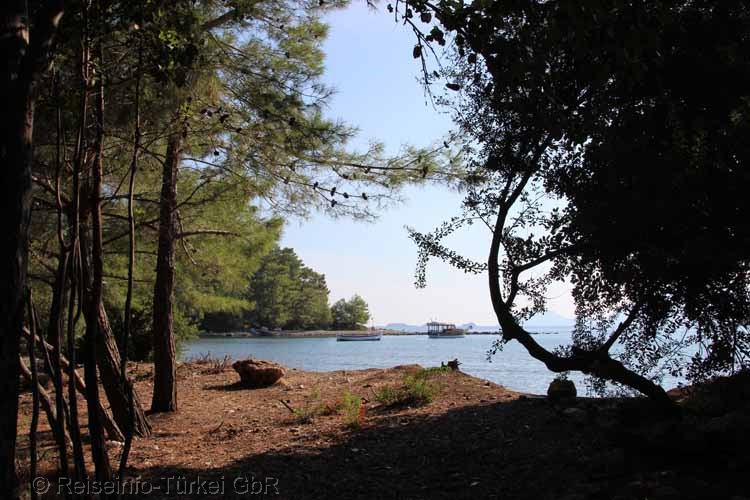 |
|||
|
An honorary gate was erected at the southern end of the boulevard on the occasion of Emperor Hadrian's visit in 129. Unfortunately, this gate, which was richly decorated with marble reliefs, fell largely victim to Antalya's need for building materials. |
|||
|
The Hadrian's Gate was located at the entrance to the southern port, which according to the chronicles was widely used as a trading port. Also, the wharves, with the exception of some remnants, have fallen victim to reuse. |
|||
|
The acropolis of Phaselis, facing the sea, is now overgrown with dense undergrowth. On the eastern slope above the theatre are the foundations of two temples dedicated to the main deity of Phaselis, Athena Polias and the god of trade. Of the splendour of the Acropolis, which can be seen from afar, only remains of the last inhabitants can be seen today, who had entrenched themselves on the ridge and abandoned the city in the 7th century. The remaining residential areas with streets and houses are almost completely demolished. |
|||
